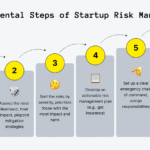Market risk management USA, U.S. companies global volatility, corporate risk strategies 2025, risk hedging in volatile markets, financial risk controls in the U.S.
Explore how top U.S. companies are tackling market risk amid global economic uncertainty in 2025. Learn the tools, strategies, and leadership insights driving stability in volatility.
Introduction: The Global Volatility Challenge
The global economy in 2025 is a complex web of shifting interest rates, geopolitical conflicts, inflationary pressures, supply chain disruptions, and tech realignments. For U.S. companies, managing market risk in this turbulent climate is not just about survival—it’s about strategic growth.
“Volatility is not a curse. It’s a test of resilience.” — Jamie Dimon, CEO of JPMorgan Chase
From Wall Street to Silicon Valley, American enterprises are deploying smarter, faster, and more resilient strategies to navigate global uncertainty.
What is Market Risk and Why Does it Matter in 2025?
Market risk refers to the potential financial loss a company faces due to changes in:
- Stock prices
- Interest rates
- Foreign exchange rates
- Commodity prices
In 2025, this risk is amplified by:
- Interest rate hikes by the Fed
- Prolonged U.S.-China trade tensions
- Unpredictable oil prices due to geopolitical unrest
- Volatile tech valuations and AI adoption gaps
According to the Bank for International Settlements (BIS), market volatility in Q1 2025 surged 28% YoY due to macroeconomic instability and fragmented global trade.
How U.S. Companies Are Tackling Market Risk
1. Hedging Strategies
Companies like Delta Airlines and Coca-Cola hedge foreign currency and fuel costs using derivatives. They use:
- Forward contracts
- Futures
- Options
- Swaps
Stat: Nearly 60% of Fortune 500 companies use hedging instruments to stabilize earnings. (Source: Bloomberg Risk Survey 2025)
2. Geographic Diversification
Firms are reducing exposure to single-country risks. For instance:
- Apple Inc. shifted some manufacturing from China to India and Vietnam.
- Tesla expanded gigafactory operations in Mexico and Berlin.
3. Scenario Analysis & Forecasting Tools
Leading companies are leveraging AI-powered forecasting models and Monte Carlo simulations to test their portfolios against extreme economic events.
“Data is our compass in the fog of volatility.” — Satya Nadella, CEO, Microsoft
4. Dynamic Supply Chain Management
To counter risk from geopolitical issues, companies now:
- Use multi-sourcing models
- Employ real-time tracking via blockchain
- Implement digital twins for scenario testing
5. Agile Capital Allocation
Businesses are increasing liquidity buffers and reprioritizing investments in safer regions or sectors. Walmart, for instance, has adjusted its real estate and expansion plans based on inflation sensitivity.
Case Studies: U.S. Giants in Risk Control
Microsoft
Used FX hedging to buffer its international revenues and invested in sovereign-bond-backed funds as a capital cushion.
Amazon
Diversified warehouse operations across North America and deployed automation to reduce labor-related volatility risk.
Goldman Sachs
Increased AI usage in trading algorithms to better anticipate market swings and rebalance portfolios swiftly.
Key Takeaways
- Market risk is unavoidable, but managing it smartly makes it a competitive advantage.
- Diversification, hedging, and AI-based tools are becoming standard practice.
- Companies that embed risk management into their strategy are outperforming peers in uncertain markets.
- Proactive measures can protect shareholder value and enhance investor confidence.
FAQs
Q1. What are examples of market risk?
Fluctuating interest rates, stock prices, foreign currency volatility, and changes in commodity prices.
Q2. How do companies hedge against market risk?
Through derivatives like options, swaps, futures, and forward contracts.
Q3. Can market risk be eliminated completely?
No, but it can be effectively minimized through strategic planning and tools.
Q4. Which sectors are most exposed to global volatility?
- Tech
- Energy
- Consumer Goods
- Automotive
- Finance


